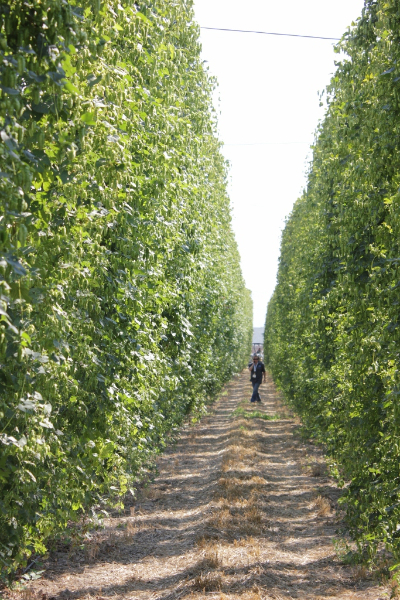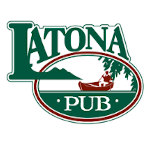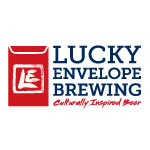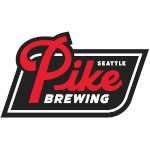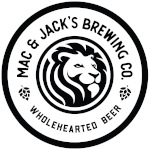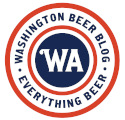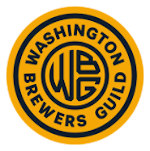The rhizomes are in the ground and the bines are beginning to climb the twine. The outlook for hop supplies in 2016 is encouraging for a couple of different reasons. Basically, existing hop inventories are up and so is hop acreage. This very good news, for both hop lovers and brewers, is based on information from Hop Growers of America and the USDA Hop Stocks Report, which the National Agriculture Statistics Service recently released.
The report found hop stocks rose 10 percent in the past year, meaning on-hand hop supplies are currently 10 percent higher than they were at the same time last year. Also, more acreage is now dedicated to hop farming domestically and globally, a continuing trend driven by the ever-increasing number of craft brewers in America and around the world.
International Hop Grower’s Convention, a global hop organization, predicts an 8,347 acre (6.7 percent) worldwide jump in acreage, led by the U.S. with 13 percent growth. Most of the new hop acreage is dedicated to aroma hops, the varieties that are most popular with today’s hop-hungry beer lovers.
 “The industry has worked hard to keep up with demand at a frenetic pace and the stock report is a lagging indicator of success in those efforts,” said Jason Perrault, a fourth generation hop grower. His family has been growing hops in the Yakima Valley since 1902 and today Perrault Farms is recognized as a leading hop grower and hop breeder.
“The industry has worked hard to keep up with demand at a frenetic pace and the stock report is a lagging indicator of success in those efforts,” said Jason Perrault, a fourth generation hop grower. His family has been growing hops in the Yakima Valley since 1902 and today Perrault Farms is recognized as a leading hop grower and hop breeder.
“The stock report is an indicator that industry efforts to keep up with demand are increasingly successful,” said Perrault. “But, in high demand varieties, despite an increase in stocks, burn rates on these varieties have met expectations and are experiencing continued growth in future contracting.”
The total amount of hops in U.S. inventory at the time of the report was 131 million pounds. To put that number into perspective, the total 2015 global hop harvest was 190.4 million pounds. While a small portion of these hop inventories will be available for purchase on the spot market*, the majority of this inventory is contracted* and is in storage until brewers request shipment.
[singlepic id=857 w=470 h= float=right]
As for the 2016 harvest, the outlook is also bright. With a projected increase of 5,400 acres in the Pacific Northwest and 600 acres in smaller farms across the country, the estimated increase for the United States is 6,000 total acres. This represents a 13 percent increase in 2016, which follows a 19 percent increase in 2015. The projected increase would bring the U.S. hop acreage to 51,275 acres. Aroma and dual-purpose varieties continues to dominate the new acreage.
Adding to the good news, normal irrigation water supplies are currently projected for Washington’s Yakima Valley, which is home to approximately 70 percent of the U.S. hop crop. This is a welcome relief following last year’s drought.
[singlepic id=815 w=470 h= float=right]
“Going into the growing season with a good supply of water, another large acreage increase, and last year’s new acreage coming into full-production, we are excited for the 2016 growing season,” said Ann George, Executive Director of Hop Growers of America. “Thanks to the efforts of the hop and brewing industries working together, contracts have increased, resulting in more breweries reliably having their needs fulfilled and at a known price. We hope to see this continue, reducing reliance on the spot market, which acts as a good buffer for unanticipated need and yield variances.”
*Contract vs Spot Market
Two terms you should know: hop contract and spot market. Most breweries of significant size sign multiyear contracts with hop suppliers to insure they get the hops they need, thus allowing them to keep brewing, consistently, the beers the public knows and craves. Beloved by some, bemoaned by others, hop contracts are valuable and necessary for a healthy hop industry. They are a real manifestation of the relationship between hop farmers and breweries.
The term spot market refers to buying hops off the shelf, or as needed, and without a contract. Usually there are plenty of hops available on the spot market. Still, a brewery that does not have a contract guaranteeing them a certain amount of Simcoe hops, for instance, may find itself scrambling to secure the hops it needs to brew its Beloved by Everyone IPA. Worst case, they have to change the recipe.
Hop contracts allow hop farmers to secure necessary capital from their lenders because they can prove that their crop is already sold. Securing loans is critical in any agricultural endeavor. Contracts also help farmers recognize which hop varieties are in highest demand. In turn, that directs their planting decisions. They know (approximately at least) how much acreage they need to dedicate to Simcoe, for instance.
Simply put, breweries with contracts get the hops they need –the quantities and varieties required to brew the beers we recognize and love– and breweries without contracts get what’s available on the spot market.
Admittedly, that is a very rudimentary introduction to hop contracts and the spot market.

